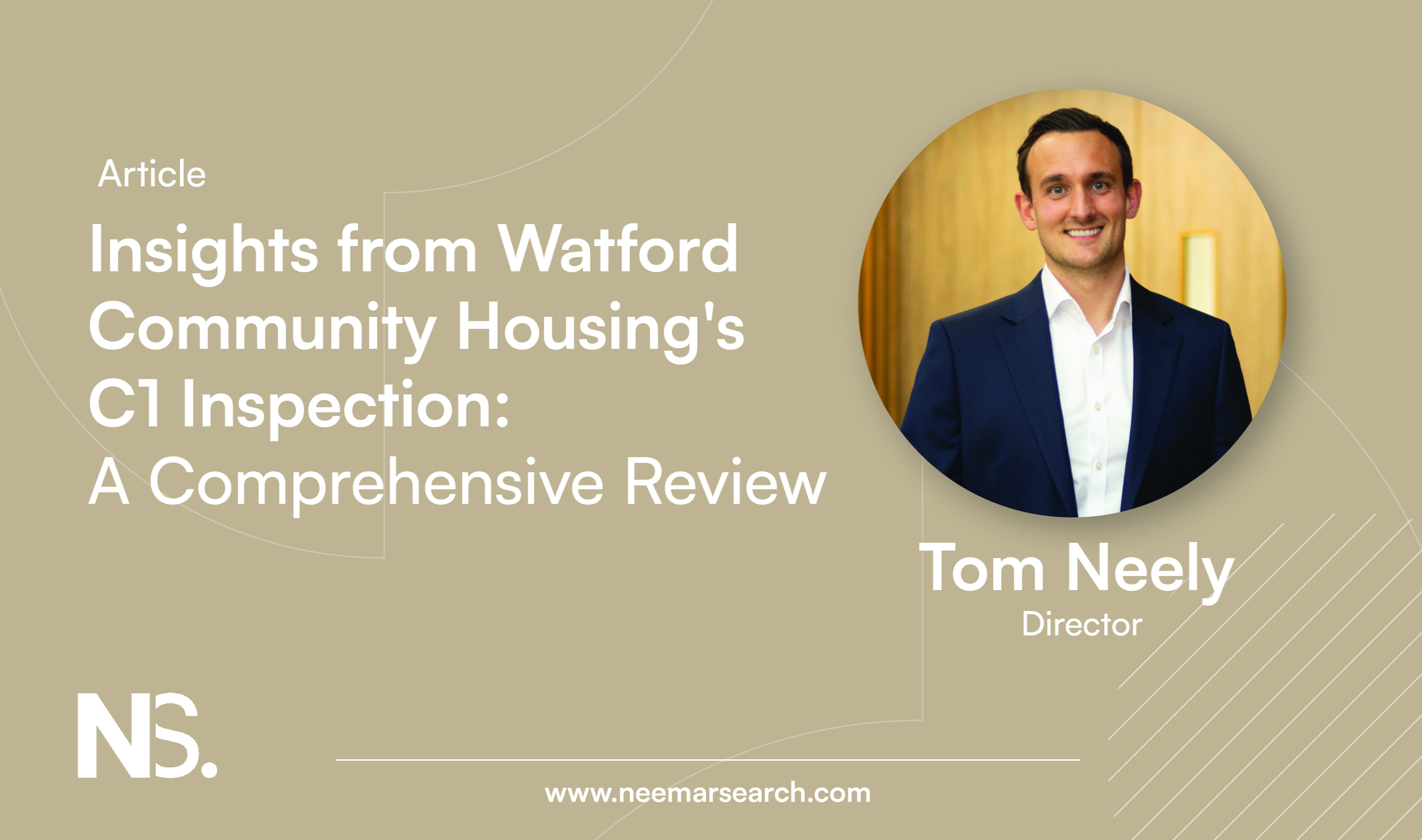
Insights from Watford Community Housing's C1 Inspection: A Comprehensive Review
26 Sept, 20247 Mins
In a recent event held for our Executive Director of Customer Community, Peter Cogan, Executive Director of Customer Services for Watford Community Housing, provided valuable insights into the organisation's experience of achieving a C1 grading in their recent regulatory inspection. This article summarises key points from his presentation, offering a detailed look at the inspection process and providing guidance for other housing associations preparing for similar assessments.
Overview of the Regulatory Approach
Peter emphasised that the regulatory body does not expect perfection from housing associations. Instead, they seek transparency and a clear understanding of an organisation's challenges and improvement strategies. This realistic approach allows for a more constructive dialogue between the regulator and housing providers.
Key Focus Areas: Customer Knowledge and Property Management
The inspection primarily centred on two crucial aspects:
Understanding of Customers: The regulator sought evidence of how well Watford Community Housing knows its customers and utilises this knowledge to enhance service delivery.
Property Management: A thorough understanding of the organisation's property portfolio and its condition was a significant focus area.
Customer Insight and Engagement
Watford Community Housing demonstrated strong customer engagement practices. Peter highlighted their approach to using customer data for improving services, particularly in areas such as arrears management and property access rates. The organisation's ability to show how customer insights drive operational decisions was well-received by the regulator.
A notable point of discussion was the challenge of engaging with the 'silent minority' - those customers who are less likely to participate in traditional engagement methods. Watford's annual 'Big Knock' initiative, where staff members visit all properties, was cited as an innovative approach to this challenge.
Property Management and Stock Condition
The organisation was well-prepared in terms of property management, with 93% of their properties having undergone stock condition surveys within the past five years. Peter stressed the importance of using actual property data rather than cloned information to inform asset management strategies.
The Inspection Process
The inspection process was described as thorough and collaborative. Key elements included:
Initial Presentation: A concise presentation (limited to six slides) providing an overview of the organisation's performance.
In-depth Discussions: Extensive sessions covering various operational aspects, including repairs, complaints handling, and performance improvement initiatives.
Evidence of Decision-Making: The regulator was particularly interested in how tenant voice influences strategic decisions. Watford's 'triangulation' approach, combining data, customer feedback, and operational insights, was highlighted as effective.
Resident Involvement: The regulator engaged directly with involved residents, including attending a scrutiny session, to assess the effectiveness of Watford's gateway model.
Communication and Engagement Strategies
Peter detailed Watford's proactive communication strategy, including:
- A 12-month rolling communication calendar
- Regular 'Tenant Question Time' sessions
- Targeted communications on specific issues such as winter pressures and financial support
Preparation Recommendations
Based on Watford's experience, Peter offered several recommendations for housing associations preparing for inspection:
Data Readiness: Ensure key performance data is readily available and well-understood by senior staff.
Transparency: Be open about organisational challenges and improvement plans.
Customer Insight Application: Demonstrate clear links between customer feedback and service improvements.
Engagement Strategies: Develop and articulate strategies for engaging with less vocal residents.
External Assurance: Utilise external audits and assessments to provide additional credibility, particularly in areas like complaints handling and Tenant Satisfaction Measures (TSMs).
Compliance and Performance
Peter stressed the importance of strong compliance performance, particularly in areas such as gas safety and fire risk management. He also touched on the organisation's approach to repairs services, emphasising transparency with customers about current performance levels and improvement plans.
Board Assurance and Governance
The inspection process included a thorough review of board assurance mechanisms. Watford Community Housing had prepared for this by enhancing the use of data in board and committee papers, providing trend analysis and contextual information to support decision-making processes.
Concluding Thoughts
In conclusion, Peter reflected on the inspection as a valuable learning experience. He emphasised that while achieving a C1 grade is commendable, the true value lies in the opportunity to showcase strengths, identify areas for improvement, and refine strategies for enhancing resident services.
The regulatory inspection process, as described by Peter, appears to be a comprehensive assessment of a housing association's operations, governance, and resident engagement practices. It underscores the importance of data-driven decision-making, transparent communication, and a genuine commitment to continuous improvement in service delivery.
For housing associations preparing for similar inspections, the key takeaway is the importance of a holistic approach that combines strong operational performance with effective resident engagement and clear, data-supported governance processes.


